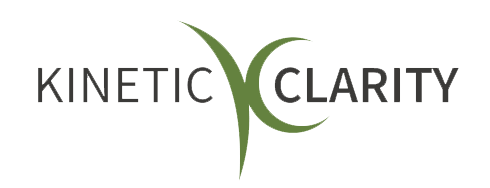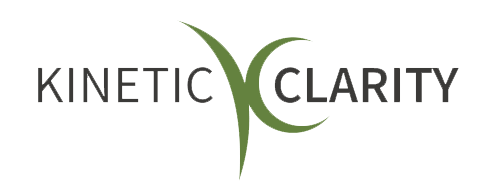The Physical Toll of Work-Related Stress
Can we do anything about stress in the workplace?

Stress feels awful, and now we have a good idea why. Simple stress can have physical ramifications on the human body, and work stress doesn’t get a free pass. Unfortunately, work stress can spill over into our personal lives, affecting our overall health and relationships.
But, hey, work is work, and we can’t do anything about the stress that naturally comes with it, right? That may not be true. So let’s explore workplace stress.
What is Stress and What Causes It?
We all have a general notion of what it means to be stressed because we’ve all experienced it firsthand. Still, what exactly is going on when we feel stressed?
Stress happens when your body perceives a threat, whether real or otherwise. It can come in the shape of physical, emotional, or psychological threats. When faced with a stressful situation, your body resorts to fight or flight; when this is triggered, your nervous system releases hormones that course through your body. They can raise your blood pressure and your heart rate.
Sustained over time, this takes a toll on your body. And unfortunately, 40% of American workers find their work “extremely stressful.”
Workplace stress can stem from an employee’s inability to fulfill job expectations and responsibilities. This may not even be their fault; while it can be due to a lack of ability, it can also come from insufficient resources, little to no support, or even a personal situation.
Short Term Effects
When we experience short bursts of stress, we’ll begin to experience some physical symptoms. These symptoms act as warning signs before chronic stress builds up. If the stress triggers are resolved quickly, we don’t experience long-term impacts.
Some signs of stress include:
- Headaches
- Inability to concentrate
- Disrupted sleep
- Mood swings
- Decreased morale and job satisfaction
Long Term Effects
When stress is sustained for extended periods, it can cause longer-lasting, chronic issues. These can ultimately threaten our very lives: 120,000 deaths in the US are blamed on workplace stress every year.
Some side effects of chronic stress are:
- Physical disorders such as back and neck pain
- High blood pressure
- High cholesterol
- Weakened immune response
- Digestive problems
- Anxiety, depression
- Increased likelihood of workplace injury
How Work-Related Stress Impacts the Office
Stress doesn’t only affect the employee experiencing it. You can see the consequences all around the office when employees begin feeling stressed. Company performance can suffer.
Stress lowers morale around the office, which spreads to other employees. Workers will feel dissatisfied and may not even be able to put their finger on why. Company culture takes a hit when more and more employees begin to feel discouraged. The ultimate effect of a massive drop in morale is an increase in employee turnover.
Stress causes productivity to drop since stressed employees have difficulty concentrating. Low morale is another hit to productivity; it’s challenging to put your best effort into your work when you aren’t enthusiastic about it.
Employees are more likely to have increased absenteeism due to stress. They feel the need to take some mental health days to help recharge their batteries but also have increased health appointments to address their physical symptoms. This can also raise healthcare costs for the company.
Considering that 57% of workers in the US and Canada suffer from daily stress, it’s clear that addressing the root of the problem is vital.
How To Intervene To Reduce Stress
Good news! Much of the stress that’s created in the workplace is something that leadership can address. With some tweaks here and there, you can get far in relieving some of the pressure employees feel daily. And it’s in the company’s best interest to keep its employees operating as stress-free and productively as possible. Unfortunately, due to stress, 76% of American employees have lower productivity levels.
The first step is to locate the primary source (or sources) of stress for your employees. Perhaps there’s a widespread issue negatively affecting your employees that you didn’t even realize was a problem. You might be able to eliminate the source of the problem entirely, or if that isn’t possible, perhaps it’s possible to reduce it.
Seek employee feedback. Let them tell you what’s causing the greatest heartburn; ask them what changes they think could help them. Assessments are an excellent tool here.
What you learn may surprise you; your employees see things from a different perspective. You could discover that you need to make sweeping changes to how the organization is run. For example, you might need to restructure how work gets done, perhaps shifting the chain of command, breaking projects into smaller chunks, or giving employees more time to complete tasks.
Smaller, more manageable changes involve giving employees more breaks, offering social events to help blow off steam, and allowing employees to have more significant input might be simple ways to start making adjustments.
Don’t Forget Self Care
Remember that you aren’t immune to workplace stress, either! Even just thinking about how to reduce stress might be causing you to break out into hives. But remember to take care of yourself, too. You need to put on your oxygen mask before you can help others.
Practicing self-care can look like many things. It can be small rewards at the end of a long day: a good meal, a treat at your favorite coffee shop, or a quiet evening with a good book.
But self-care also requires greater investments. Setting boundaries is a crucial way to look out for yourself. If you are taking on too much responsibility at work (either by choice or by force), it might be time to learn to say no to some requests. But, of course, only say no when it’s appropriate.
Fully unplug when you can, and invest in your free time outside of work. The more fulfilled you feel, the greater your capacity to invest in your work when you are there.
Remember not to ignore your basic needs. Eat healthy, well-balanced meals and get a good night’s sleep. And if it’s appropriate, talk to a therapist.
Kick Stress to the Curb
Today’s modern approach to work has convinced us all that stress is just a natural by-product of the office. But that’s unacceptable; stress is not healthy for us, even for those who feel they work best under pressure. It can cause many long and short-term physical and mental illnesses.
We should all strive to address areas of stress in the workplace so we can enjoy more peaceful and productive days. When employees thrive, the company thrives! Find ways to address the most significant stressors in your workplace for a more sustainable approach to work.












